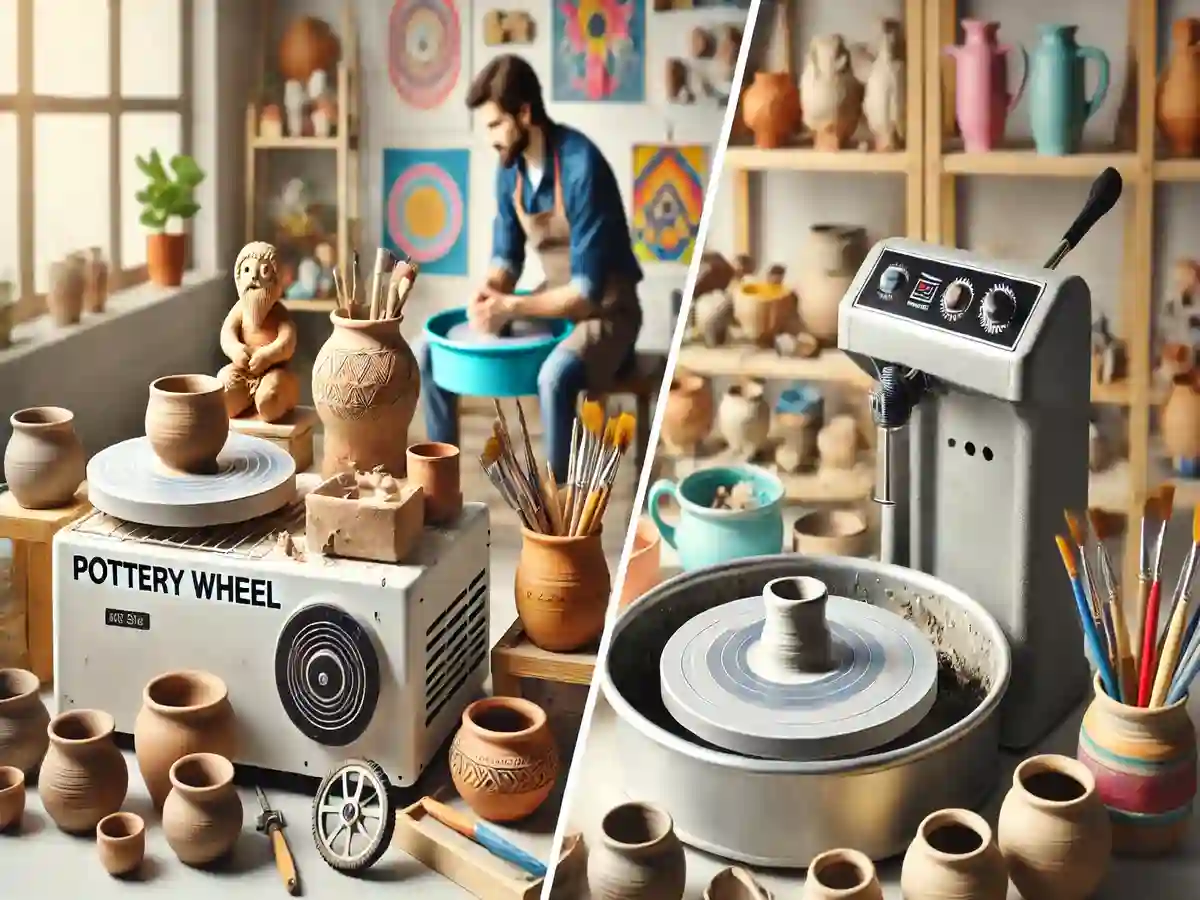Both experts and amateurs of ancient art still find great fascination in pottery. The pottery wheel—a tool that turns clay into exquisite, useful objects—is at the core of this work. It’s important to understand the different types of pottery wheels to enhance your artistic process, regardless of your experience level. This page delves into various aspects of pottery wheels, ranging from basic options to specialized models.
Pottery Wheel for Beginners
For newcomers to pottery, selecting the appropriate wheel is crucial. Beginning with a basic, user-friendly wheel enables beginners to focus on honing their skills. The kick wheel is a common choice since it provides a tactile sensation and guides novices in grasping the rhythm of pottery production. Small tabletop wheels, supporting around twenty pounds of clay, are perfect for people with limited budgets and space. However, they are still effective for learning fundamental skills without taxing the operator.
Mini Pottery Wheel
Among amateurs and those with limited space, mini pottery wheels are becoming rather trendy. Despite their small size, these wheels offer significant torque, enabling users to create intricate patterns. For making little objects like jewelry or decorative accents, mini pottery wheels are particularly appropriate. For both novices and experienced potters wishing to increase their repertoire, the best mini pottery wheels mix portability with utility to make them a valuable purchase.
Best Pottery Wheel
When selecting the perfect pottery wheel, it depends on your personal preferences and specific needs. For many, the dependability and adaptability of the Shimpo Whisper and Pacifica GT models set them apart. Both experts and beginners prefer these wheels since they let a great range of ceramic styles. Consider factors like motor power, wheel head size, and foot pedals or speed controls when selecting a wheel. Your pottery experience can be much improved by investing in a premium wheel.
Electric Pottery Wheel
Modern potters often choose electric pottery wheels because they are convenient and precise. These wheels eliminate the need for human effort by running motors that drive them, therefore allowing constant speed control. Electric wheels come in various sizes and power capacities to accommodate different skill levels and project requirements, making them versatile. For typical pottery work, for example, a 450W electric wheel with a foot pedal offers enough power to guarantee flawless functioning.
Used Pottery Wheel
An economical way to begin your pottery journey is by investing in a secondhand pottery wheel. Still, a purchase should be based on careful consideration of various elements. To be sure the wheelhead, motor, and other parts are in good operating order, examine them. Take also into account the wheel’s capacity and whether it fits your planned projects. A kept-up used wheel can be a great tool for years to come and provide great value.
Children’s Pottery Wheel
Children can benefit from pottery firsthand by developing fine motor skills and experiencing creative stimulation. Children’s pottery wheel design prioritizes safety and user-friendly features. Usually smaller and with simplified controls, these wheels are accessible for younger users. Certain models include extra tools and courses, offering a complete educational process for young pottery fans. Encouragement of young children to investigate pottery can spark a lifetime love of this age-old craft.
Finally
Pottery wheels are essential tools that open up a world of artistic possibilities. If you are a potter looking for new challenges or just starting out and want to learn the basics, there is a wheel for you. From strong electric models to small, portable wheels, every kind has special benefits. Understanding the traits and advantages of different pottery wheels is crucial for making informed choices and enhancing your artistic journey. Embrace the craft of pottery and let your imagination blossom from the correct wheel by your side.

